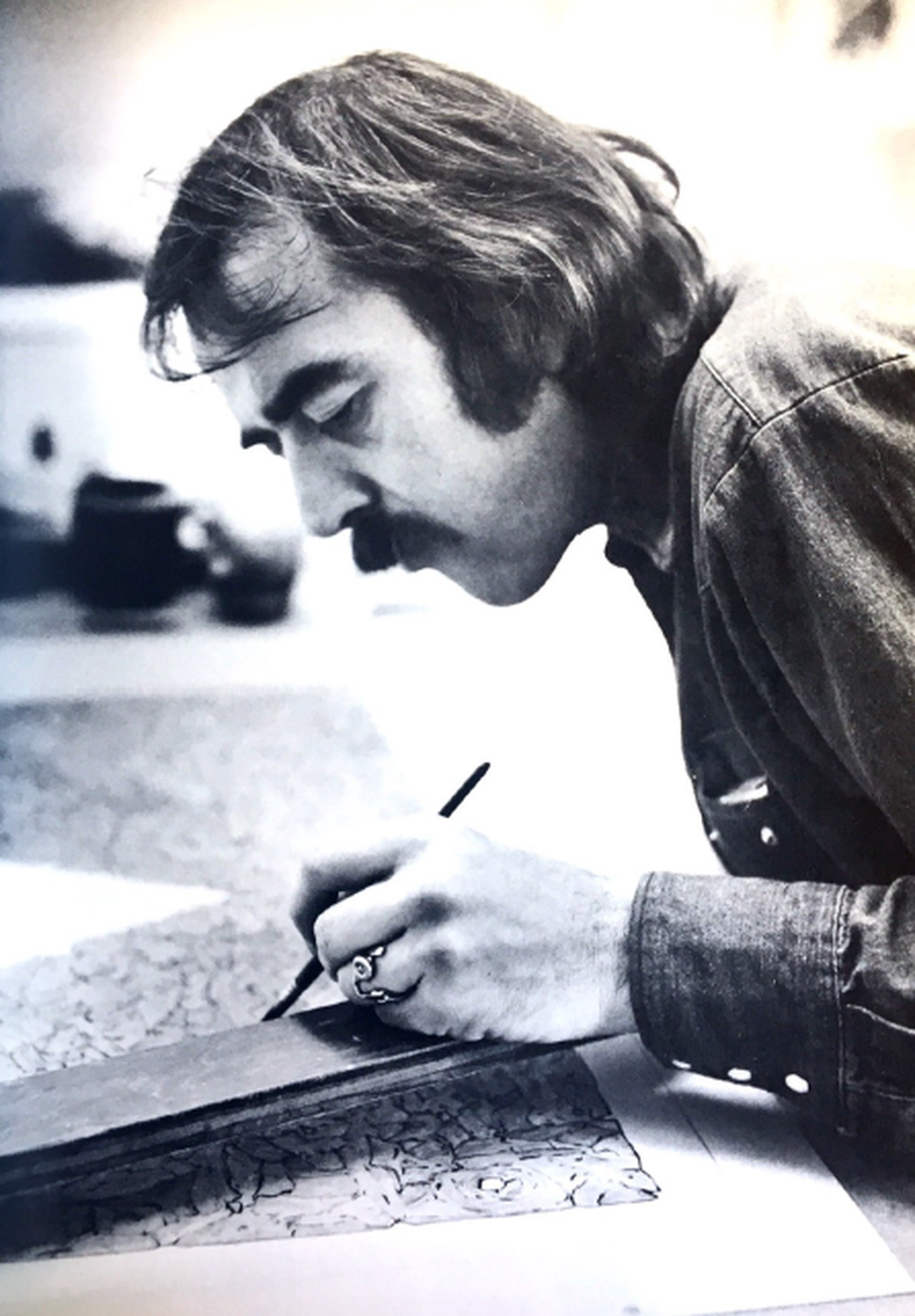William T. Wiley. Metaphysical Funk Monk
William T. Wiley moved from Washington to California to study at the California School of Fine Arts (now San Francisco Art Institute), where he received an MFA in 1962. Though abstract painting was the foundation of his art curriculum in the late 1950s, he was captivated by San Francisco’s bohemian Beat movement—with artists like Bruce Conner, Jay DeFeo, and Wally Hedrick—and readings of Zen Buddhism. A creator of paintings, drawings, assemblage, and sculpture as well as film, music, and performance, Wiley became a kind of “guru of freedom to artists,”1 which often meant “transgress[ing] the boundaries of polite taste.”2 He painted on unstretched canvases, incorporating them with salvage yard finds to form crude assemblages; for Enigma Doggy (1966), an early assemblage now in the Museum’s collection, Wiley rolled up an abstract painting, wrapping it with tape and attaching it by a chain to a painting of a cartoon dog vomiting.3 In 1968—after a period of travel and artistic self-doubt, during which he momentarily stopped making art—Wiley started making small-scale watercolors, challenging formalism at a time when monumental minimalist sculpture dominated the art world. Wiley brought his informal approach to artmaking to his classrooms at the University of California, Davis; often breaking into folk songs and playing the harmonica in class, he impressed a sense of boundless humor and experimentation upon his students.4
Rene di Rosa, Local Color: The di Rosa Collection of Contemporary California Art (San Francisco: Chronicle Books, 1999), 182. ↩︎
Joann Moser, “What’s It All Mean?” in What’s It All Mean: William T. Wiley in Retrospect (Berkeley: University of California Press; and Washington, DC: Smithsonian American Art Museum, 2009), 24. ↩︎
Joann Moser, “What’s It All Mean?” in What’s It All Mean: William T. Wiley in Retrospect (Berkeley: University of California Press; and Washington, DC: Smithsonian American Art Museum, 2009), 24. ↩︎
Richard L. Nelson, in conversation with William T. Wiley, Manuel Neri, and Wayne Thiebaud, “You See: The Early Years of the UC Davis Art Faculty,” Mondavi Center, University of California, Davis, November 13, 2007, video, 58:06 minutes, available at youtube.com/watch?v=cIg8urzesPs. ↩︎
